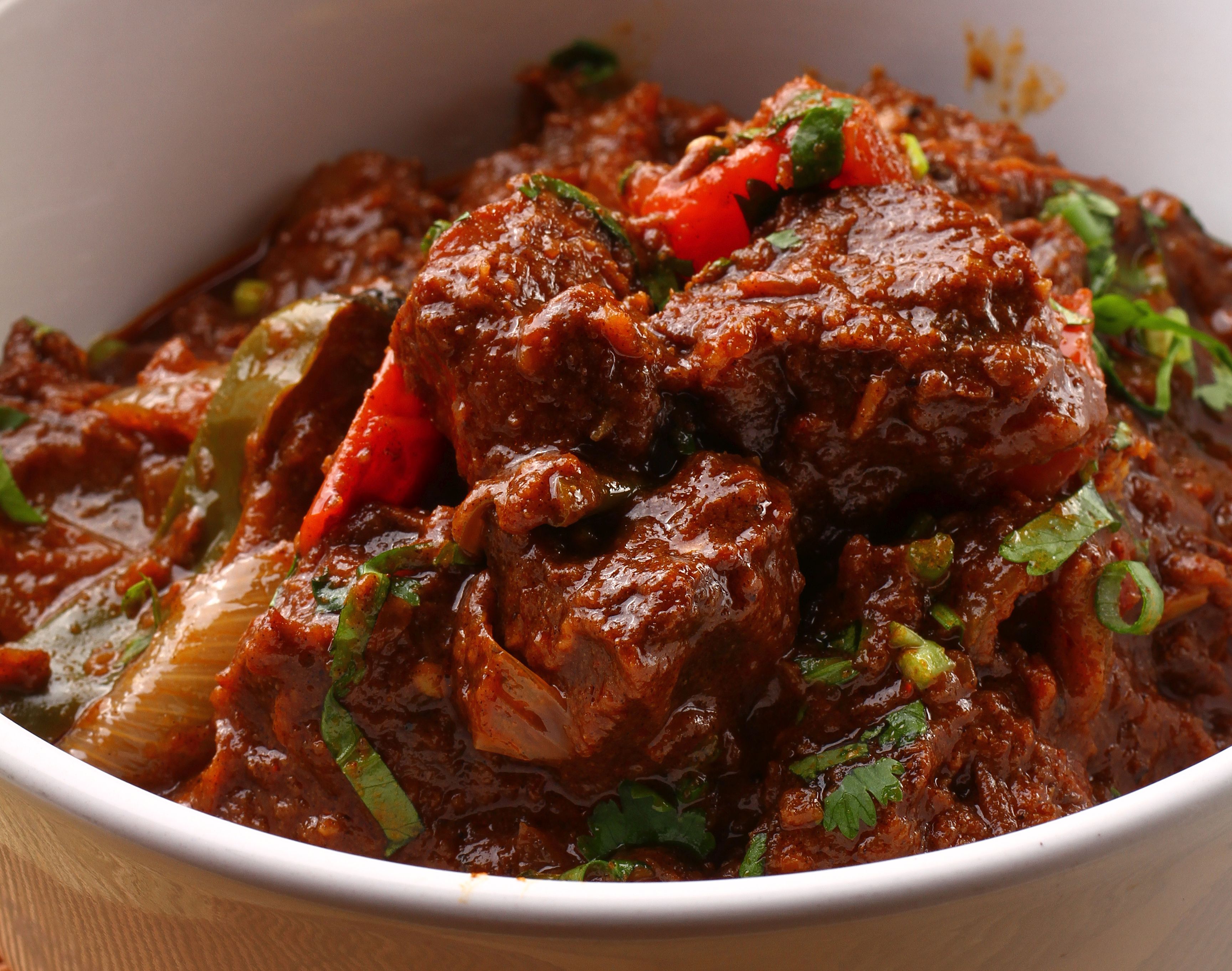Recipe Description
Daging harimau menangis is a direct translation of the original Thai dish, Sua Rong Hai, or crying tiger. It is a barbecued dish of heavily seasoned beef served with a spicy dipping sauce, and is usually eaten as a lettuce wrap or over steamed rice.
It’s name is derived from local anecdotes of cattle carcasses that had been mauled by tigers recovered from the jungle. Villagers would collect the remains of the cattle, usually the brisket, or bottom sirloin, parts which the tiger was said to be unable to access due to the surrounding bones. Since the tigers were deprived of the enjoyment of these parts of the beef, they were said to cry, hence its name.
It is also said that the beef brisket, called tiger meat in Thailand, consists of layered meat and fat which resembles the tiger skin. And as the meat was being charbroiled, the dripping fat resembled teardrops, in addition to the stripes of the grill marks, all alluding to the tiger’s presence in the dish.
Daging harimau menangis made the headlines recently when a businesswoman tried to patent the name. Even after she retracted her bid, the social media storm that followed not only brought greater awareness of this dish, but it also solidified its Thai origins.
This dish is very popular at many Thai food courts and street vendors, with each stall boasting its own specific recipe. The standard marinade consists of salt, sugar, pepper and fish sauce, with the addition of soy sauce, oyster sauce, garlic or coriander in its many variants.
The brisket cut of meat is one that contains a lot of connective tissues, so you either have to cook it very slowly over a long time, or briefly at very high heat to no more than medium. Another way to tenderise it is to pound it with a mallet to break down some of the long and crisscrossed fibres.
The recipe is so simple that anyone can prepare this dish at home. The meat just needs to be marinated for about half a day until it is almost cured. Then briefly charbroil over an open fire or grill in a cast-iron skillet, keeping the meat medium-rare. It can also be grilled in the oven, but it will be harder to control its doneness.
It is served with a spicy dipping sauce, variants of which may include chilli flakes, tamarind and palm sugar, instead of fresh chillies, lime and sugar.
This is an excellent dish to grill at the table if you have a hibachi or electric grill at home. Served hot off the grill, these morsel of meat wrapped in lettuce is a great communal dish to buka puasa with your family.
Recipe Ingredient
- For marinade:
- 500g beef brisket
- 4 cloves garlic
- 1 tsp black pepper
- 2 tsp salt
- 4 tbsp oyster sauce
- 3 tbsp fish sauce
- 3 tbsp kicap manis
- 4 tbsp brown sugar
- Thai-style dipping sauce:
- 6 cloves garlic
- 10 pods green chilli padi
- 3 tsp oyster sauce
- 2 tsp fish sauce
- 3 tsp brown sugar
- juice from 1 lime
- 1 shallot, finely sliced
- 2 pods red chilli padi, finely sliced
- 1 sprig cilantro, minced
Instructions
- Slice beef to half-centimetre-thick strips. Pound with a mallet until tender.
- Blend all marinade ingredients into a fine paste in an electric mill. Marinate beef for 4-5 hours.
- Broil beef over charcoal or in a skillet, 2 minutes on one side, flip and cook another 2 minutes.
- Or grill on a rack in a 250°C oven for 10 minutes until lightly charred.
- Except for shallots, red chilli padi and cilantro, blend all the sauce ingredients into a fine paste in an electric mill.
- Stir in remaining ingredients and serve with Daging Harimau Menangis over lettuce wraps.










